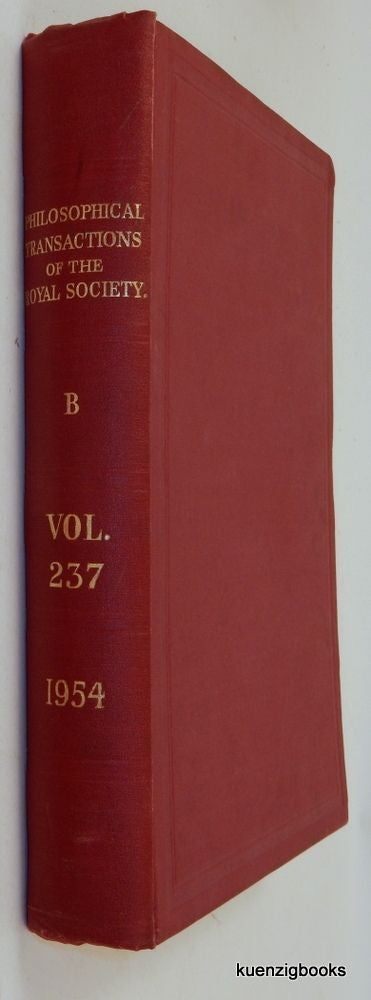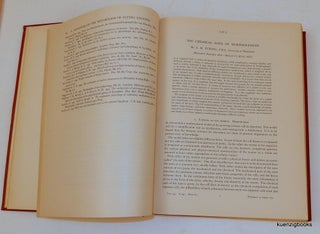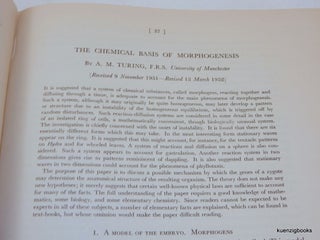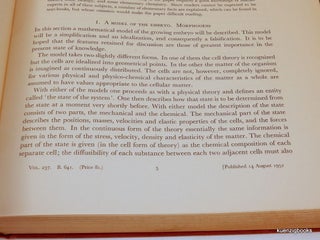The Chemical Basis of Morphogenesis
London and New York: Cambridge University Press 1954. First Edition. vii, 605 pages. 4to. Publisher's original red cloth with gilt spine lettering and simple square embossed edge decorations on boards. Corner tips bumped, and a bit of wear to the spine panel. Foreedge of boards dinged in a few places, boards slightly warped. Endpapers foxed, and some light spotting to page edges. In Philosophical Transactions of the Royal Society of London, Series B, Volume 237, Biological Sciences, the entire volume offered. The Turing paper is found on pages 37-72. Very Good. Cloth. [26636]
Turing's paper has been “hugely influential” in developmental biology and was used by Turing as a pioneering application in the emerging field of Artificial Life, where computers are often used to simulate living and life-like systems.
"In this paper, Turing proposed that biological pattern formation arises in response to a chemical pre-pattern...Applications of Turing's work to developmental biology are too numerous to list but include limb development, pigmentation patterning, hair and feather germ formation, tooth morphogenesis, phyllotaxis, hydra patterning and regeneration. Moreover, ideas of self-organization now abound in biology, chemistry, and ecology...his paper has significantly advanced the field and the paper is being cited almost everyday." (Cooper)
“In his final years Turing worked on … Artificial Life (A-Life). The central aim of A-Life is a theoretical understanding of naturally-occurring biological life – in particular… its ability to self-organize (i.e. to develop form and structure spontaneously)... Turing was the first to use computer simulation to investigate a theory of 'morphogenesis'...he began this investigation as soon as the first Ferranti Mark I [computer] to be produced was installed at Manchester University...In June 1954, in the midst of this groundbreaking work, Turing died.” (Copeland)
This work is surprisingly rare in the marketplace. We are aware of a few examples, the Gandy (offprint issue) copy which sold at Christies in 2013 for nearly $20,000 (subsequently offered by the trade for as much as $38,000), and three copies sold into private collections, two through our offices. OCLC/Worldcat notes three copies of the offprint issue (ADM, QGJ, and S5B) as of this writing. An important work.
References: Cooper and van Leeuwen, Alan Turing his work and impact, p684-5. Copeland and others, Alan Turing's Electronic Brain, pp 136-7.
ITEM SOLD





